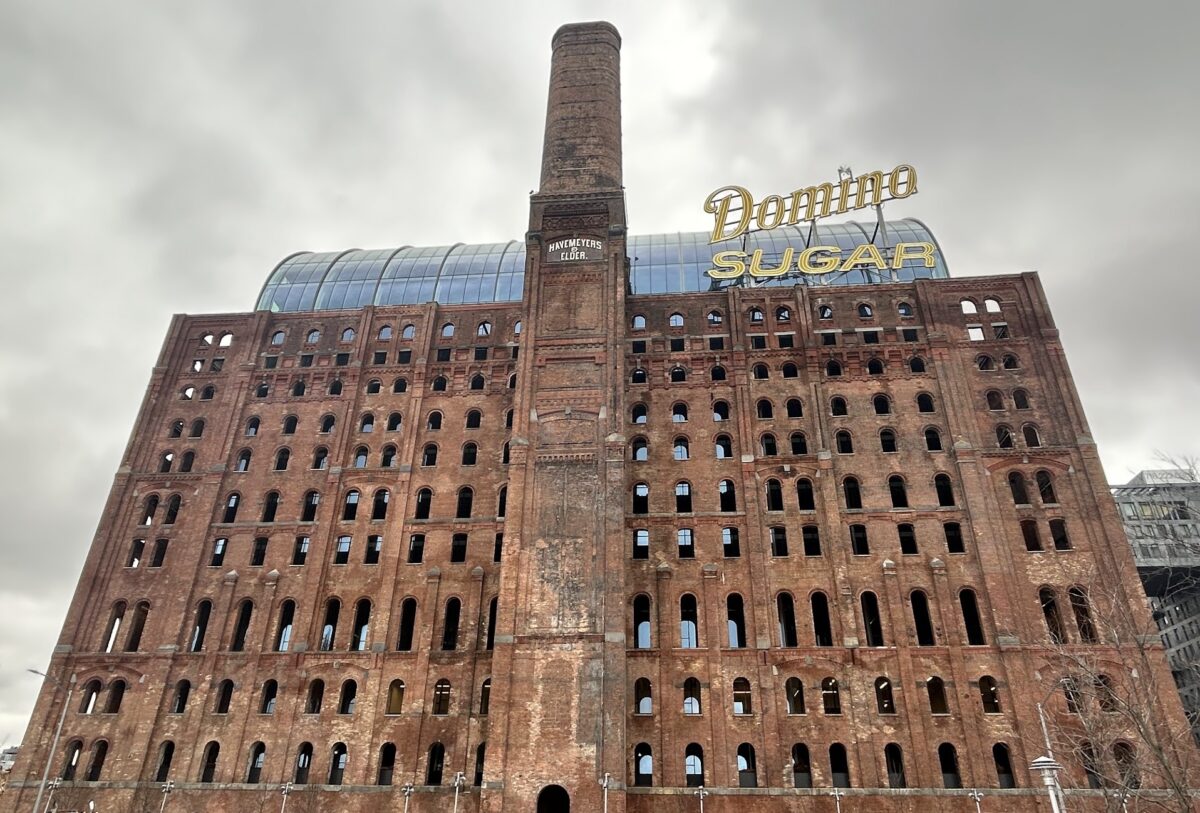The Brooklyn waterfront was once decorated with a yellow Domino Sugar sign, affixed to an aging refinery along a row of deteriorating industrial structures facing the East River.
The Domino Sugar Refinery, completed in 1883 (after a devastating fire destroyed the original), was more than a factory. During the Gilded Age and into the 20th century, this Brooklyn industrial landmark was the center of America’s sugar manufacturing, helping to fuel the country’s hunger for sweet delights.
But the story goes further back in time — back hundreds of years in New York City history. The sugar trade was one of the most important industries in New York, and for many decades, if you used sugar to make anything, you were probably using sugar that had been refined in New York.
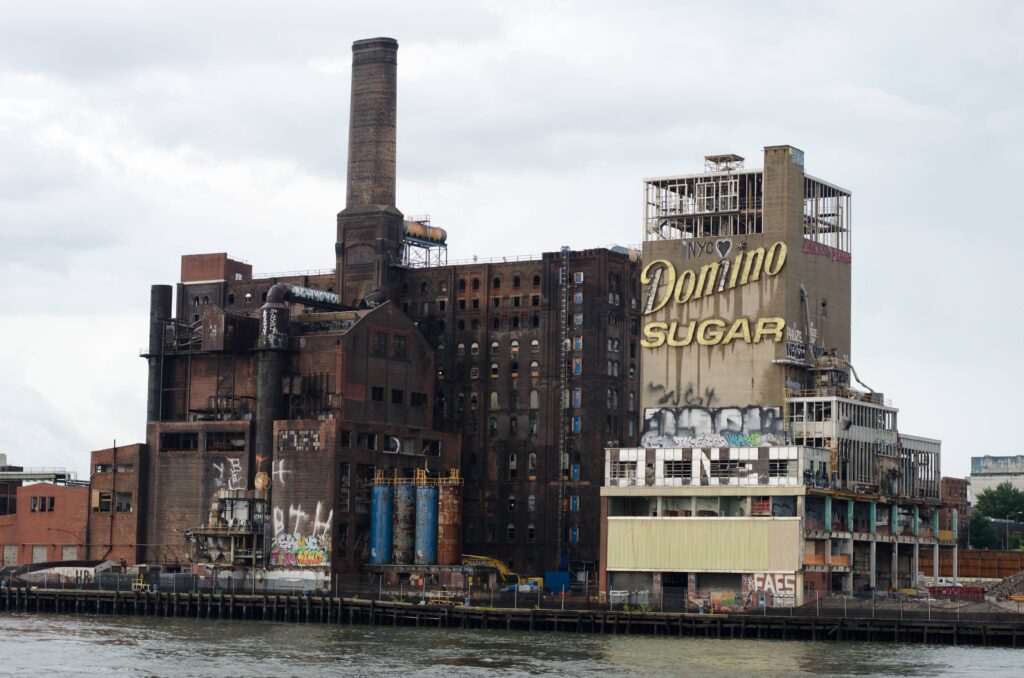
Sugar helped to build New York. Thousands and thousands of New Yorkers were employed in sugarhouses and refineries. And of all the sugar makers, there was one name that stood above the rest — Havemeyer!
The Havemeyers were America’s leading sugar titans. By the 1850s they had moved their empire to the Brooklyn waterfront – and the neighborhood of Williamsburg.
Their massive refinery helped establish the industrial nature of Williamsburg, leading to a rush of sugar manufacturers to Brooklyn, most of which would then be absorbed into the Havemeyer’s operation.
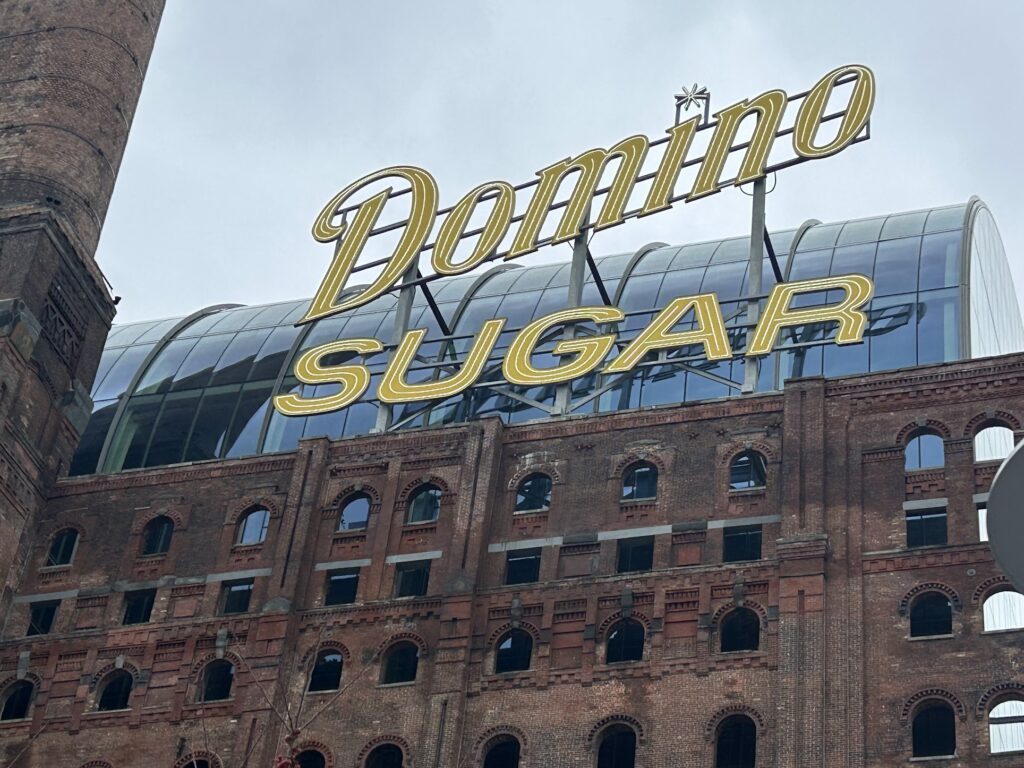
But this story is even larger than New York, of course. It encompasses the transatlantic slave trade, political influence in the Caribbean, Cuba-United States relations, and the sorry working conditions faced by Hayemeyer’s underpaid employees.
PLUS: It’s Dumbo vs Williamsburg in the Coffee and Sugar War of the 1890s!
LISTEN NOW: BEHIND THE DOMINO SIGN
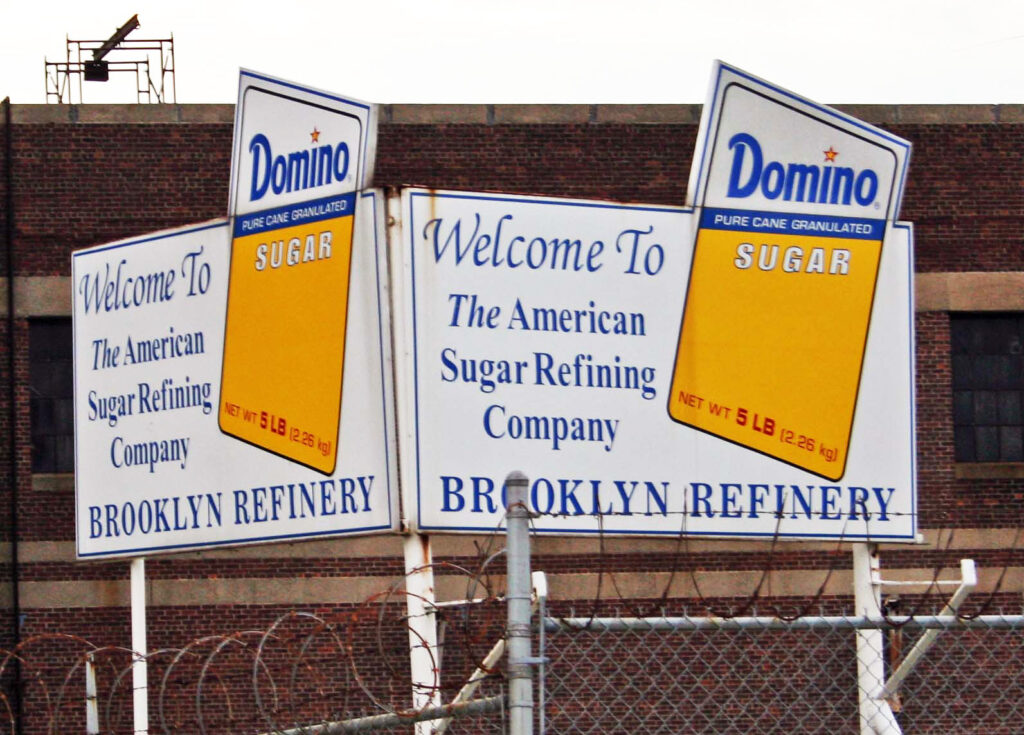
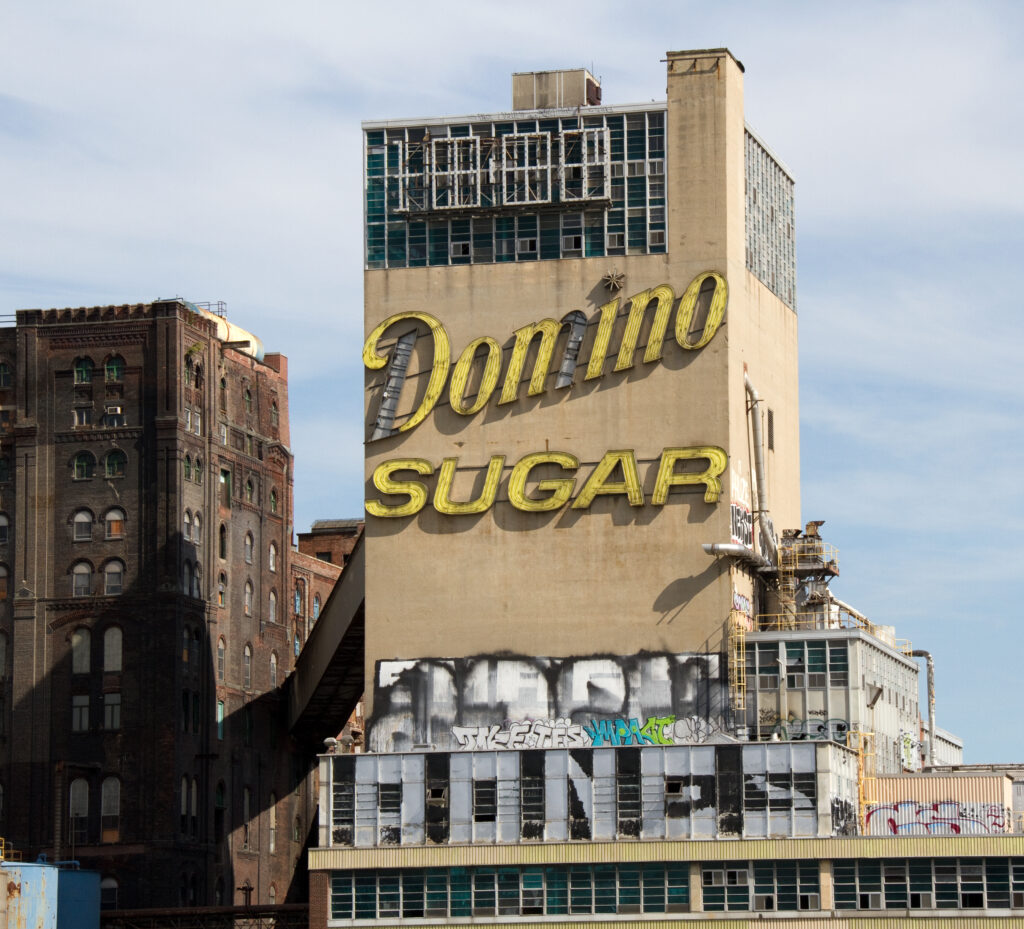
This view of South 3rd Street and Kent Avenue still pops up on Google Maps (as of Feb 15, 2024)
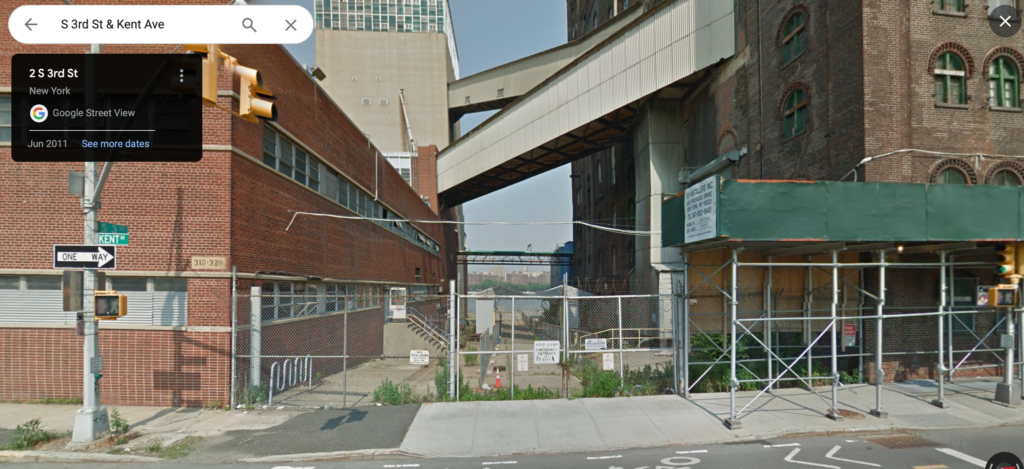
View of the same intersection in 2024
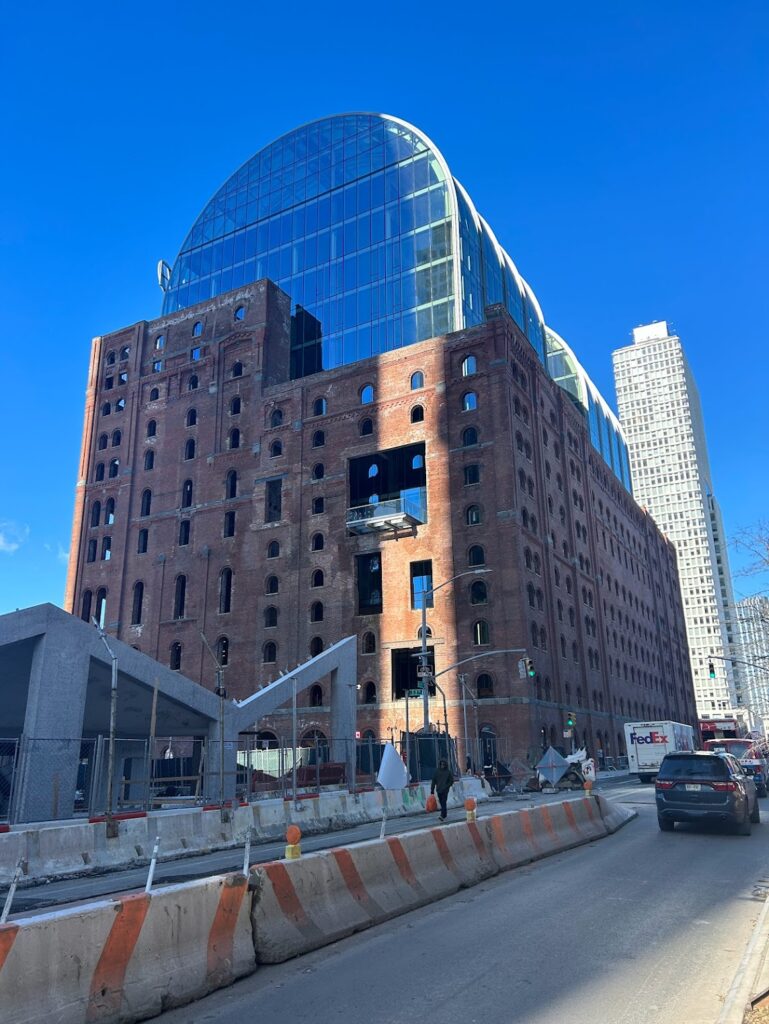
The Livingston Sugar House, on Liberty Street, and the Rhinelander Sugar House, between William & Duane Streets in New York. They were the city’s largest buildings which is why both were repurposed as prisons during the Revolutionary War.
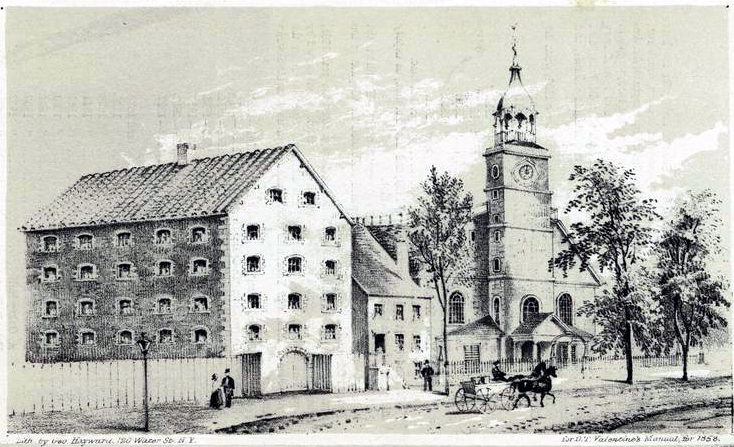
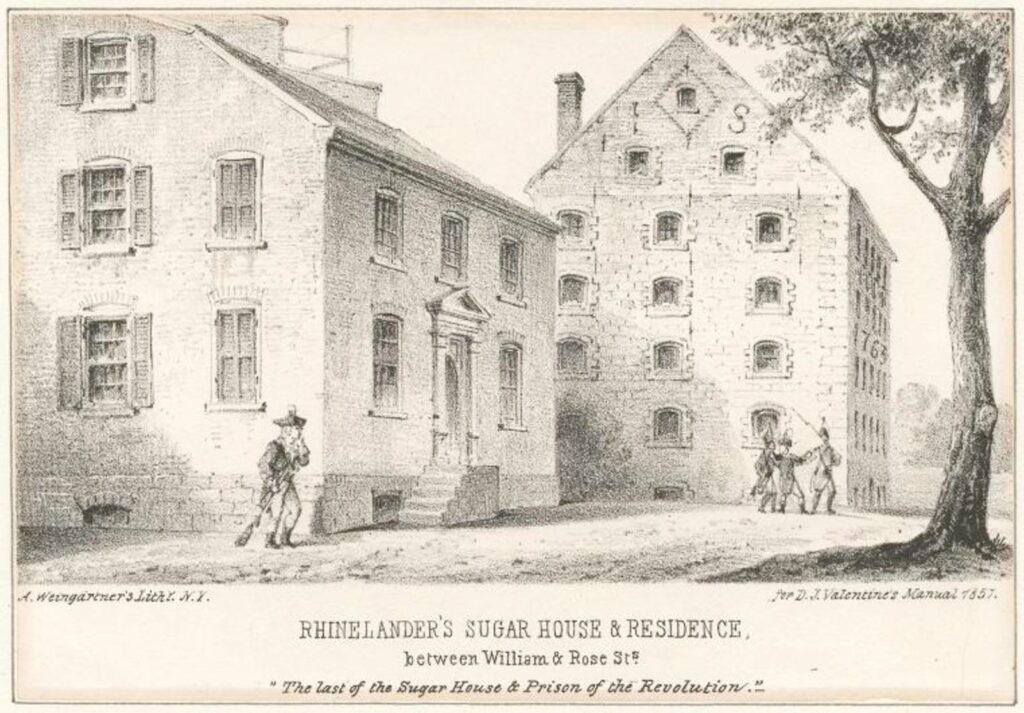
The original Havemeyer sugar refinery on the Brooklyn waterfront before the fire, 1876.

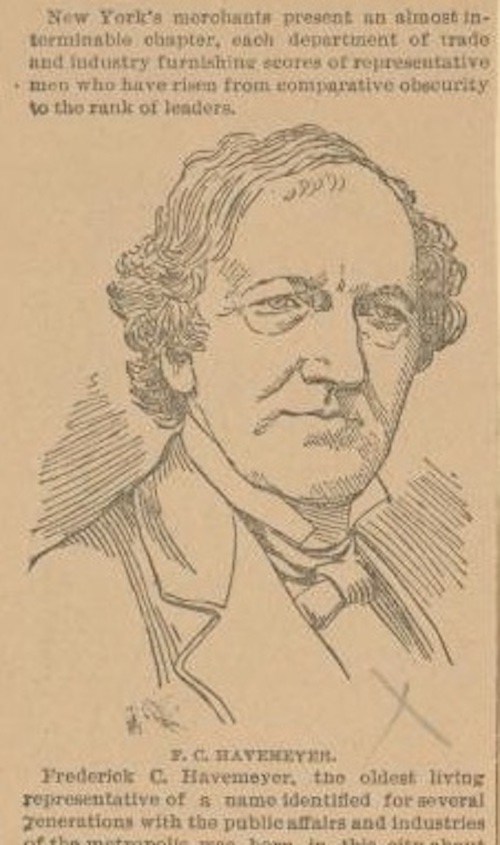
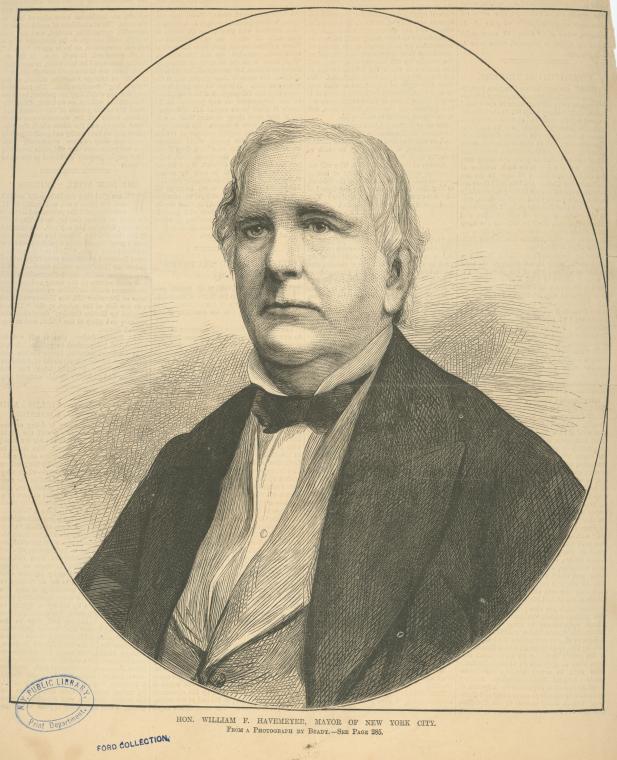
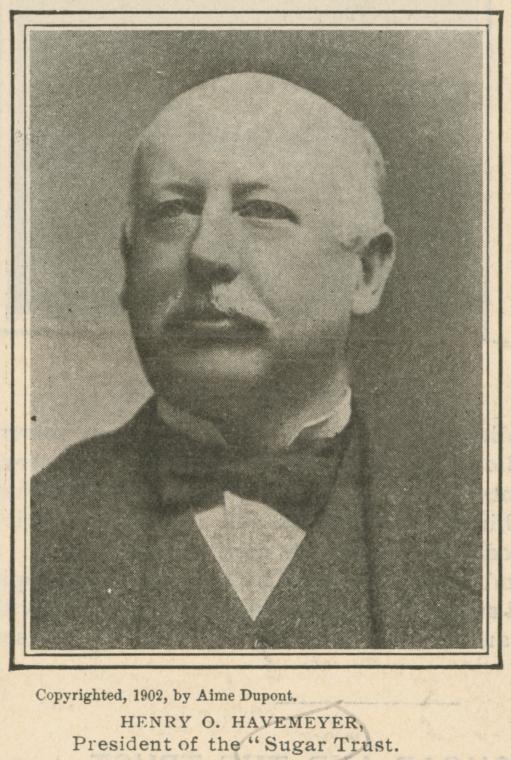
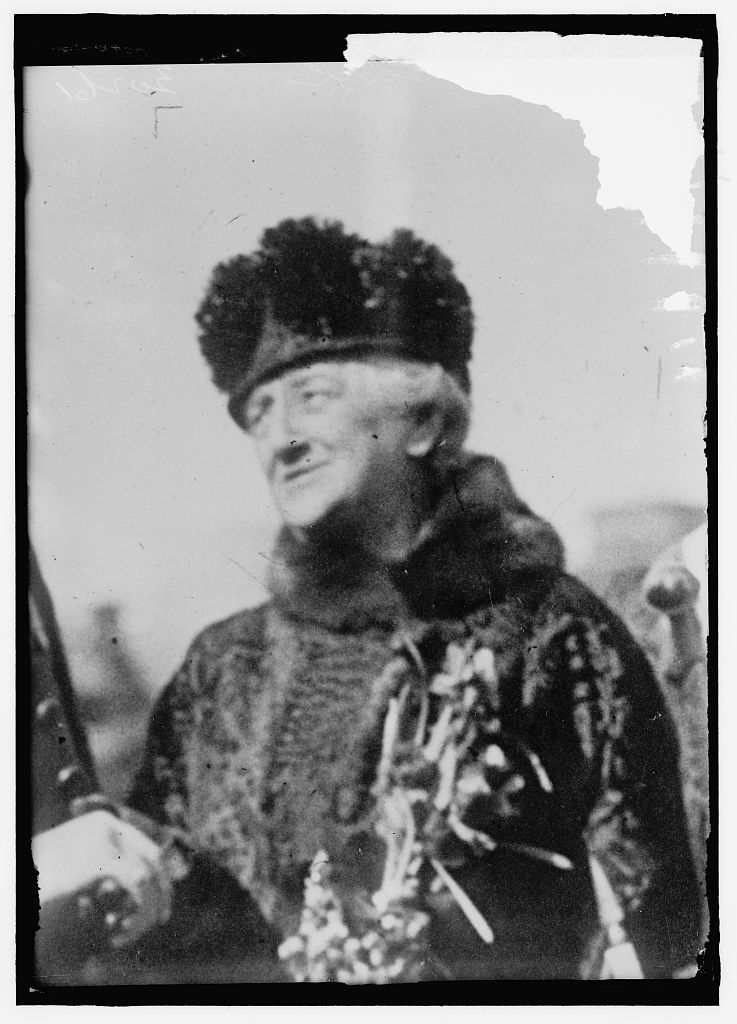
Havemeyer Hall on the Columbia University campus, built in 1897 and named for Frederick Havemeyer who moved the family’s sugar enterprise to Brooklyn. According to Untapped Cities, it happens to contain Hollywood’s favorite classroom.
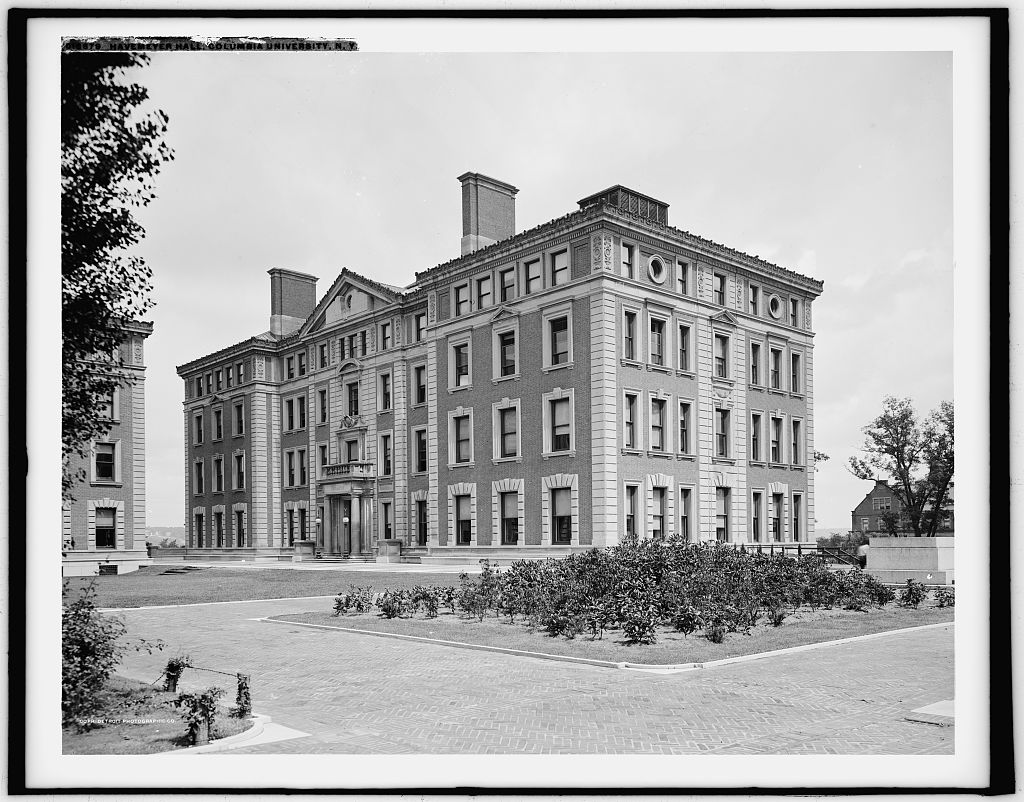
Taken by Greg June 2018, before the completion of The Refinery:
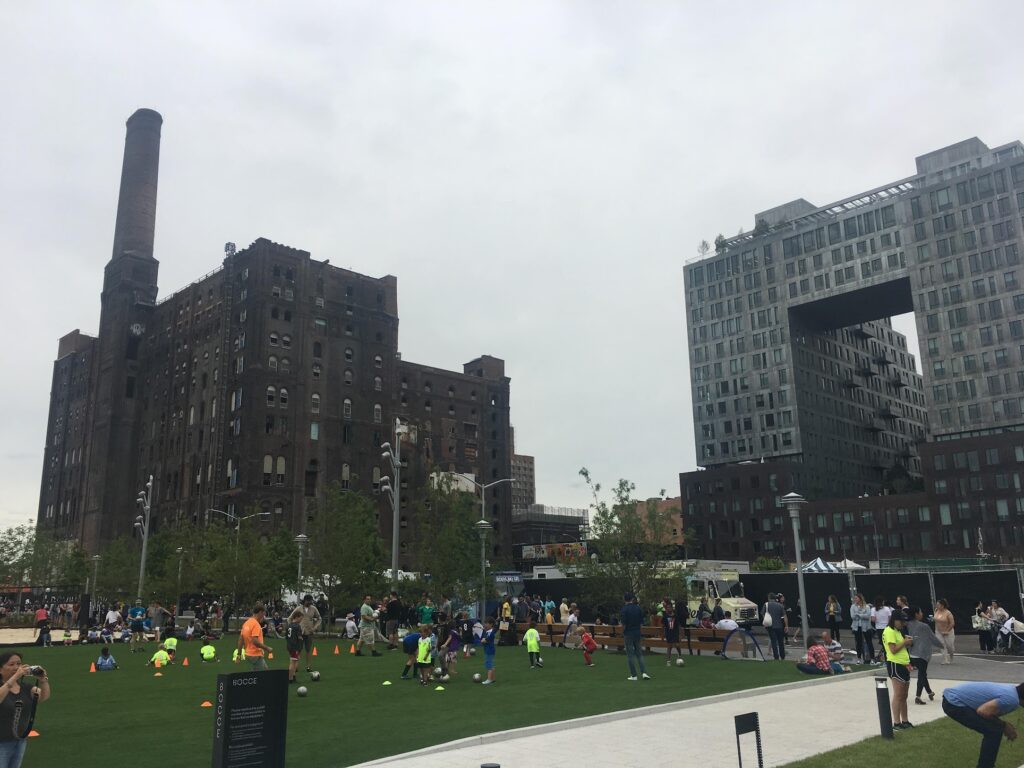
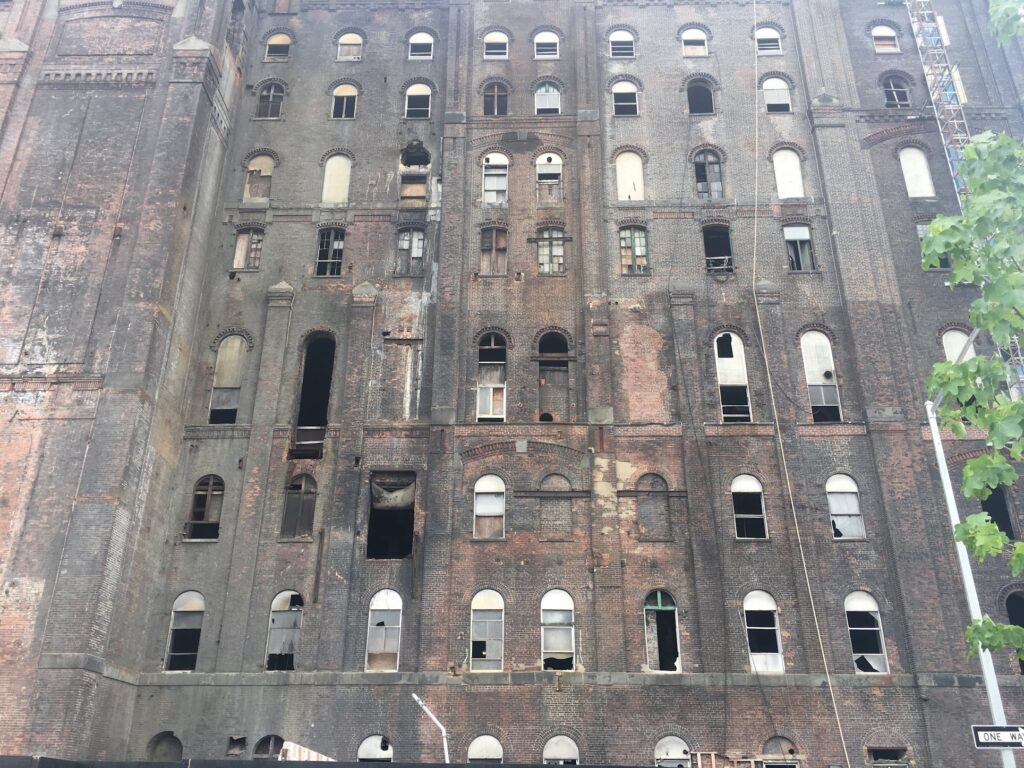
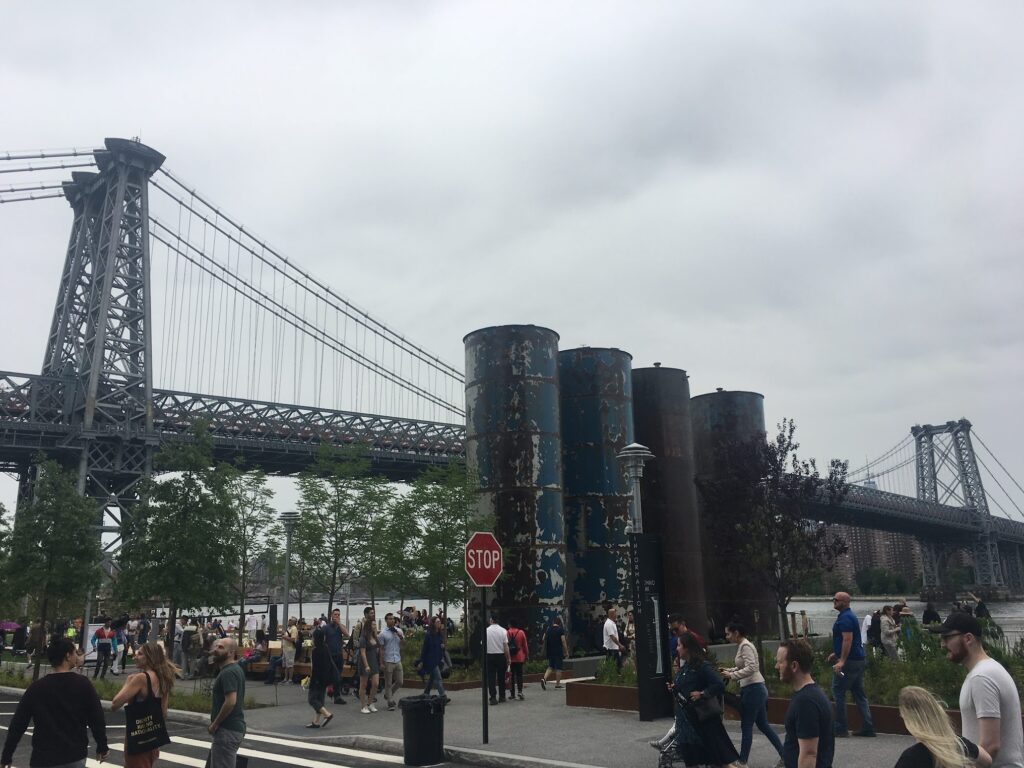
Current photos by Greg (circa January/February 2024)
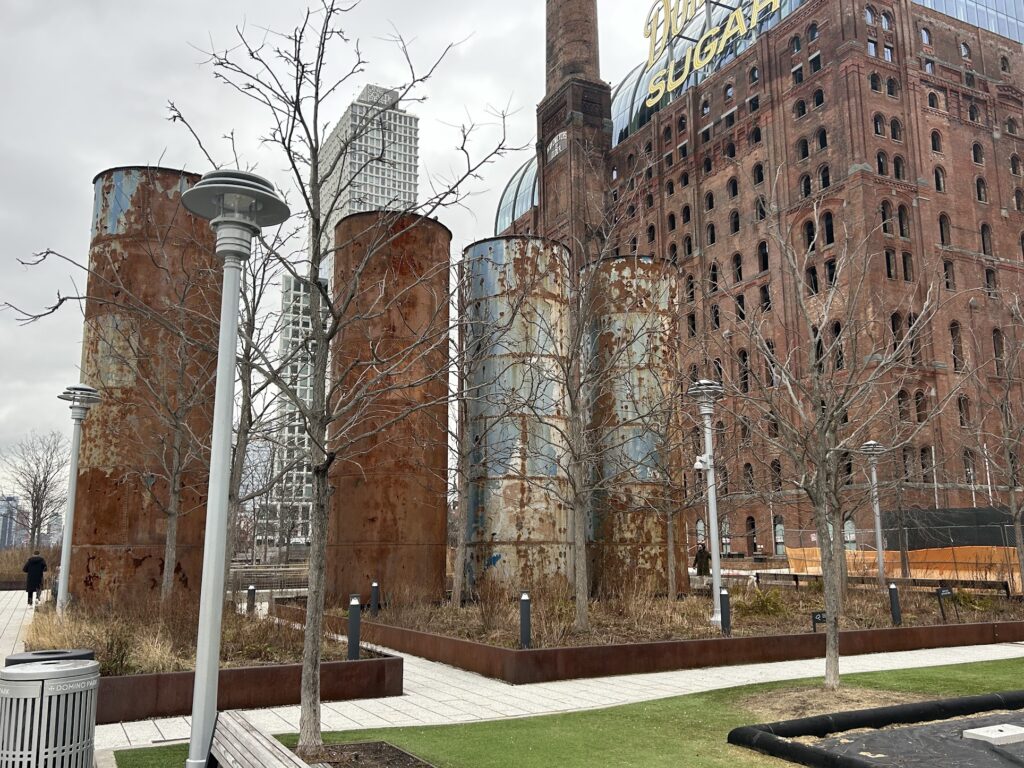
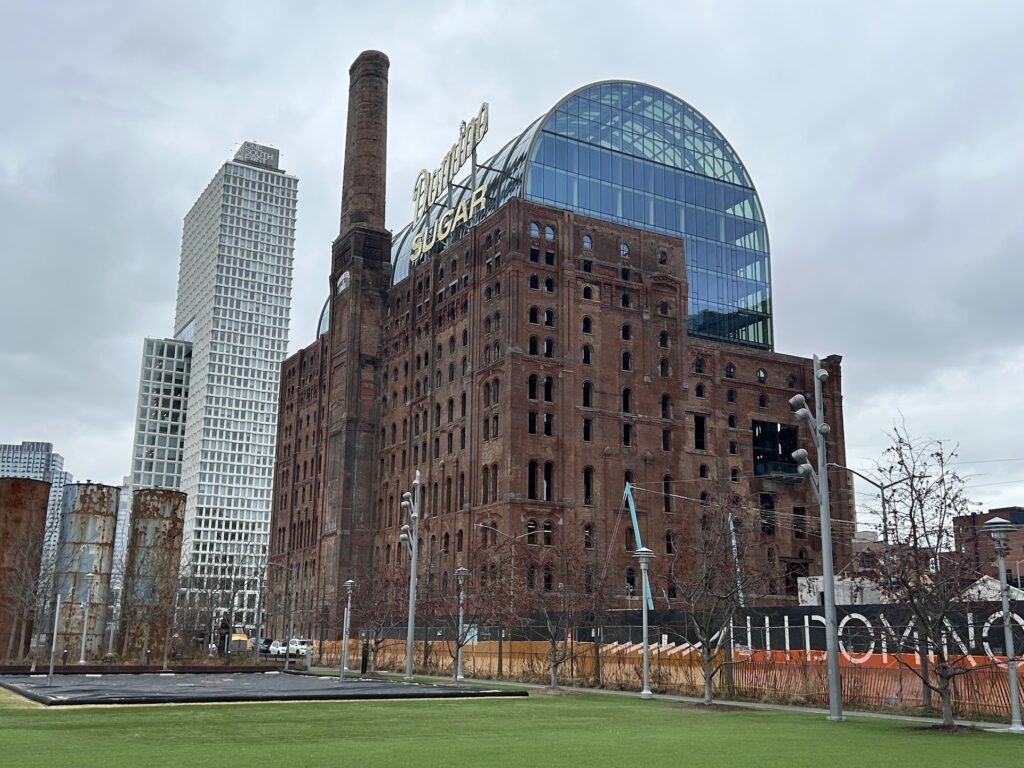
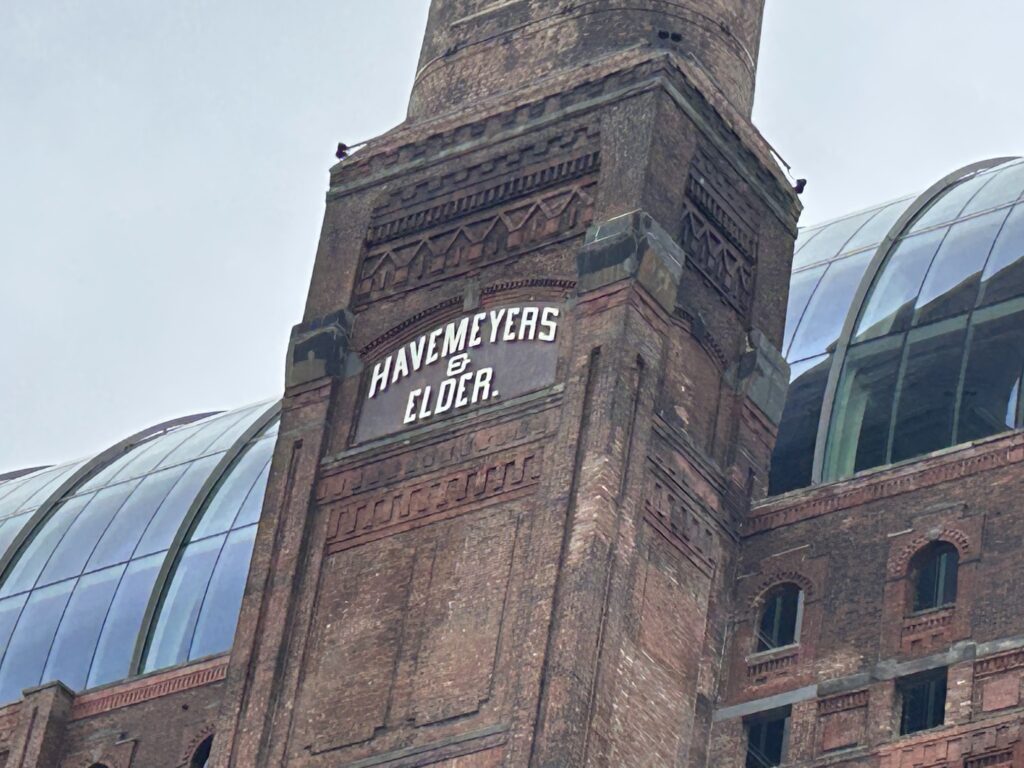
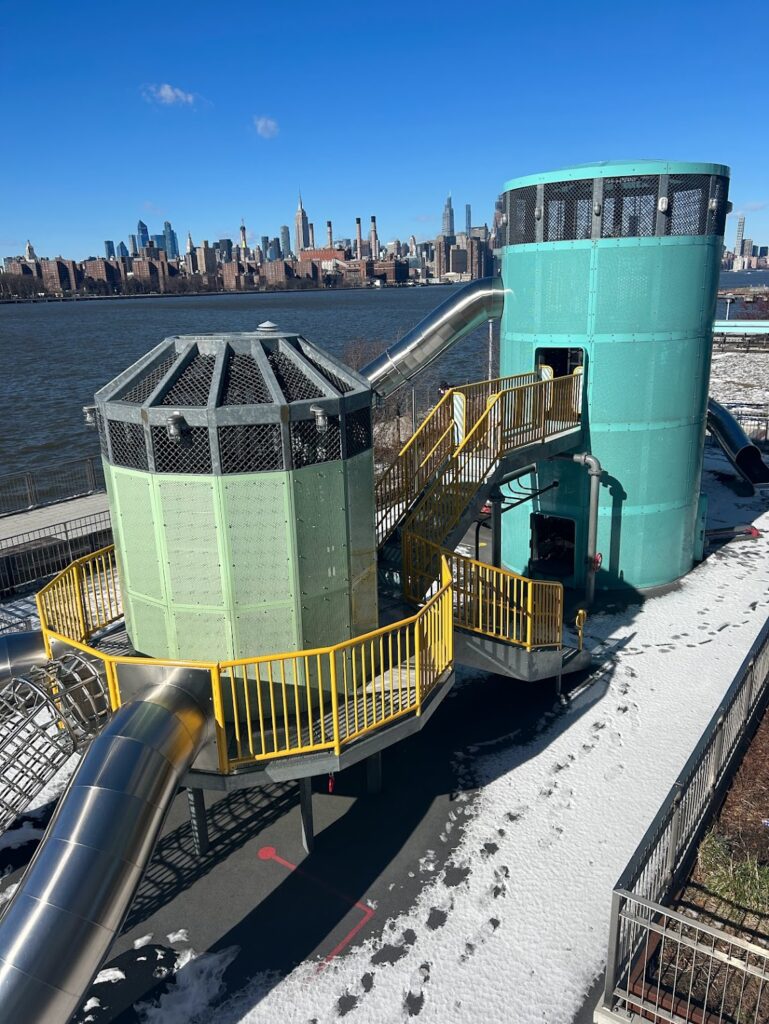
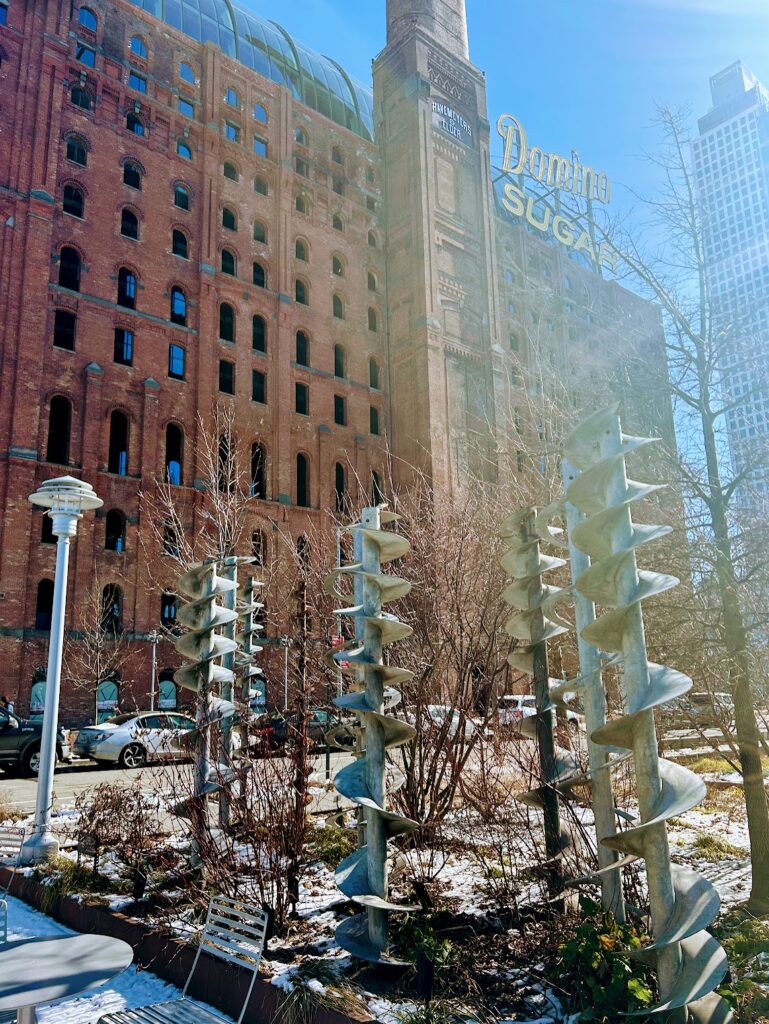
Site of the former wharves where ships docked with sugar cane product from destinations around the world.
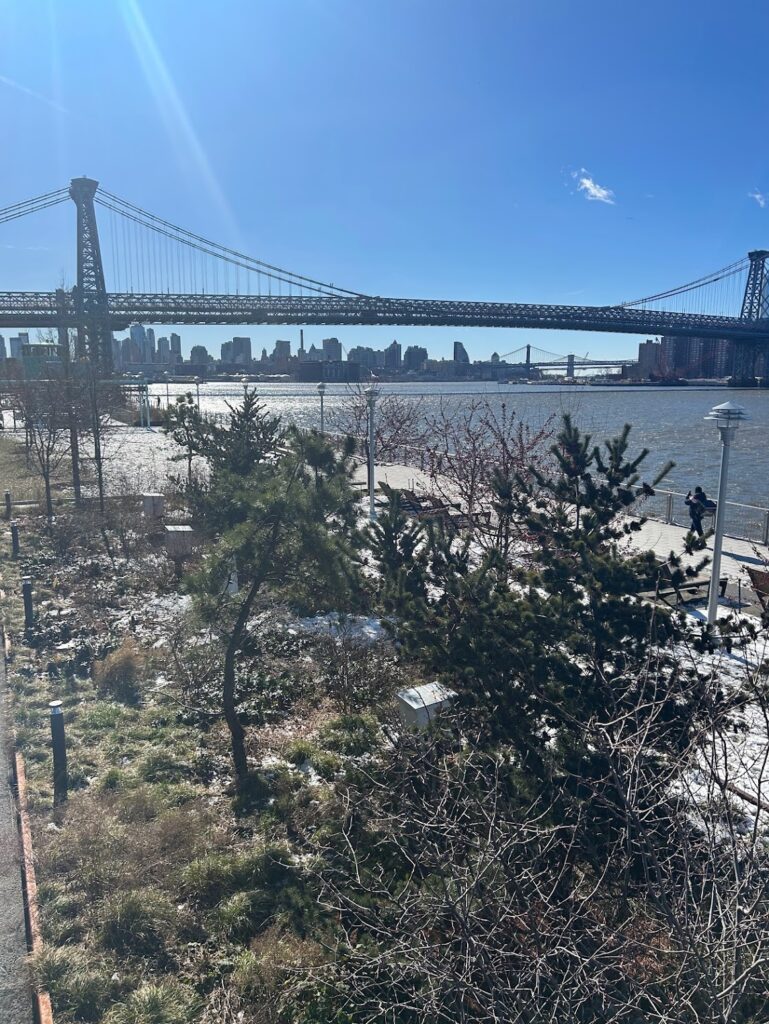
Where does the name Domino come from? Most likely from a kind of factory cut — the domino cut — name for the sugar appearing like little dominos. The box today is also rectangular like these ‘domino’ lumps.
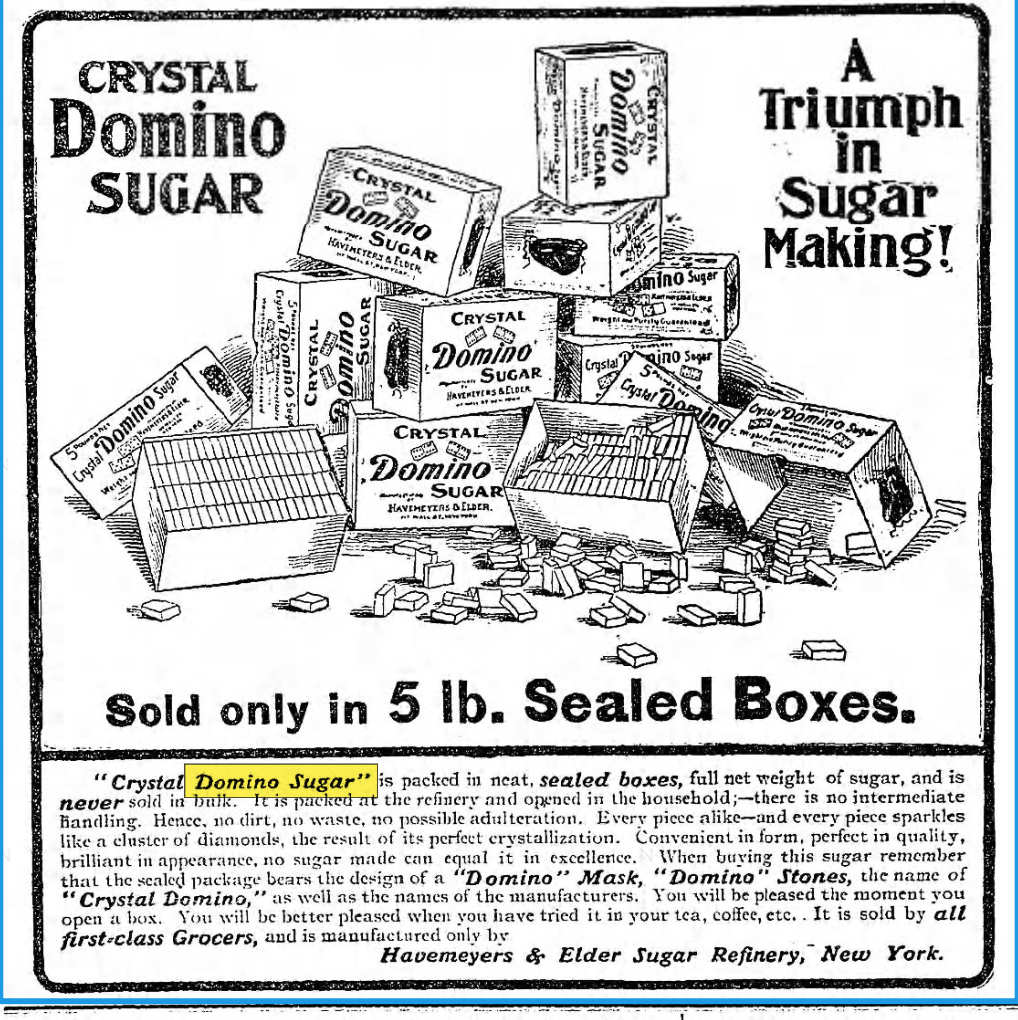
FURTHER READING
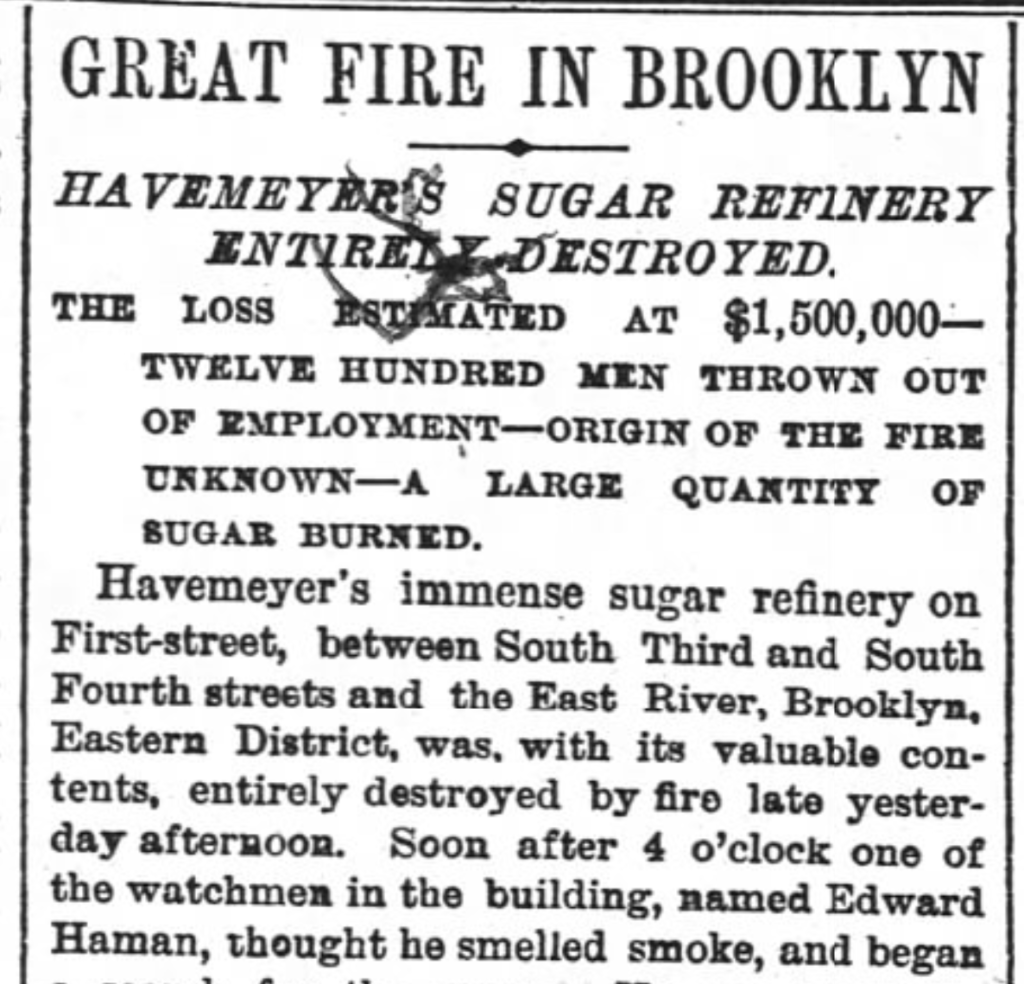
Brooklyn’s Sweet Ruin: Relics and Stories of the Domino Sugar Refinery / Paul Raphaelson
Cuba: An American Story / Ada Ferrer
Food City: Four Centuries of Food-Making in New York / Joy Santlofer
Frederick Christian Havemeyer Jr: A Biography / Harry W. Havemeyer
Henry Osbourne Havemeyer: The Most Independent Mind / Harry W. Havemeyer
The Havemeyers: Impressionism Comes To America / Frances Weitzenhoffer
The Rise and Fall of the Sugar King / Geoffrey Cobb
Sugar: A Bittersweet History / Elizabeth Abbott
White Gold: A Brief History of the Louisiana Sugar Industry / Glenn R Conrad, Ray F. Lucas
The World of Sugar: How the Sweet Stuff Transformed Our Politics, Health, and Environment Over 2,000 Years / Ulbe Bosma
“At the Domino Sugar Refinery, a Glass Egg in a Brick Shell” by Debra Kamin (New York Times)
“Kara Walker’s Next Act” by Doreen St. Fèlix (Vulture)
“The Last Grain Falls at a Sugar Factory” by William Yardley (New York Times)
“Williamsburg. What Happened?” by Steven Kurutz (New York Times)
Landmark Designation Report: HAVEMEYERS & ELDER FILTER, PAN & FINISHING HOUSE

